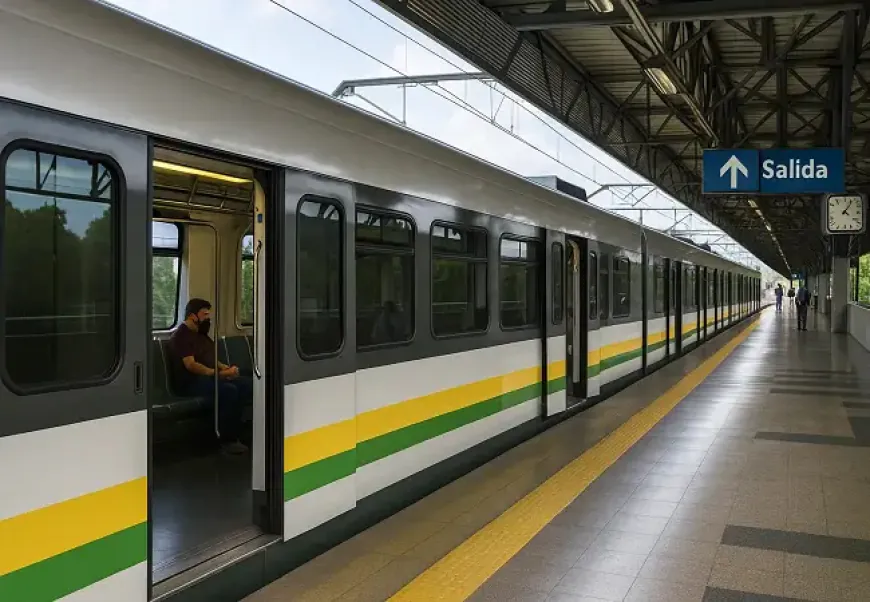Colombia: CAF $300M for Railways | 6 Priority Corridors
CAF finances Colombian railway reactivation with $300M. Six priority corridors, studies launched. Goal: reduce 70% road freight dependency.

Updated on October 21, 2025
BOGOTA — Colombia is taking a decisive step toward modernising its transport infrastructure. On October 10, the Development Bank of Latin America and the Caribbean approved a loan of up to $300 million USD to the Colombian government to finance the Railway Reactivation, Sustainable Mobility and Logistics Efficiency Programme. This decision comes as over 70% of the country's domestic freight currently travels by road, resulting in high logistics costs that undermine national competitiveness.
Structural funding to reverse the trend
The CAF loan forms part of a $360 million package allocated to Colombia, with $60 million dedicated to the airport sector and $300 million to railways. According to the financial institution's official announcement, the programme aims to address chronic underutilisation of the national rail network. The primary objective is to significantly increase the share of freight transported by rail, currently marginal compared to the dominance of road transport.
This road predominance generates substantial cost overruns for Colombian businesses. Road infrastructure suffers accelerated wear, while greenhouse gas emissions from the transport sector remain high. The government is banking on rail as a solution to these structural challenges.
Ambitious government strategy under Gustavo Petro
Reactivation of the national railway network constitutes a priority axis for the Colombian government led by President Gustavo Petro. The strategic plan comprises several key components: creation of a National Railway Agency to oversee the sector, modernisation of railway legislation and regulations, and designation of priority projects benefiting from guaranteed financing.
The programme also integrates promotion of clean technologies, particularly electrification of urban and regional transport systems. This environmental dimension addresses the country's climate commitments while improving the financial viability of public transport networks.
Last August, the executive identified six priority projects representing a total projected investment of 94 trillion Colombian pesos, approximately $24.2 billion USD. This considerable amount demonstrates the scale of governmental ambition to sustainably transform the country's transport landscape.
Six priority corridors identified
Selected projects cover strategic axes linking major economic and port zones:
- Interoceanic corridor: Atlantic-Pacific ocean connection
- Pacific OP (Yumbo - Caimalito): Valle del Cauca industrial zone service
- Pacific corridor (Buenaventura - Palmira): 120 km port-interior connection
- Villavicencio - Puerto Gaitán: eastern Llanos region opening
- Bogotá region - Central railway corridor: major 393 km axis
- Bogotá - Belencito corridor: capital-Boyacá department link
These corridors aim to rebalance transport modes by offering competitive alternatives to road transport, particularly for heavy freight and interregional connections. The Buenaventura-Palmira corridor holds particular importance as it connects the country's leading Pacific port to interior agricultural and industrial zones.
Tenders issued for two feasibility studies
The National Infrastructure Agency has published tender documents for technical feasibility studies of two strategic corridors. The Bogotá - Central Railway Corridor project covers 393 kilometres with a study budget set at 91.2 billion pesos. The Buenaventura - Palmira section extends 120 kilometres with a study budget of 53.3 billion pesos.
The provisional schedule sets the opening of bids for November 6. Contract signing is scheduled for December 23, enabling study work to begin in early 2026. These studies will determine technical, economic, environmental and social aspects of the projects, essential steps before the construction phase.
ANI currently manages three operating rail corridors: La Dorada-Chiriguaná, Bogotá-Belencito and the Pacific corridor. The new projects form part of a broader dynamic to restore a network that today counts only 37% active lines, according to government data.
Context and challenges: a network to rebuild
Colombia has approximately 3,000 kilometres of railway track, but only a fraction remains operational. The national railway company went bankrupt over three decades ago, leading to the near-disappearance of passenger and freight rail transport. This situation progressively concentrated flows onto roads, creating bottlenecks and increasing costs for economic operators.
The 2023 Railway Reactivation Plan had already estimated $23.3 billion USD as the investment required to restore rail as the national logistics backbone. CAF financing represents a concrete first tranche of this multi-year programme. Authorities are counting on public-private partnerships to complement public funding and accelerate implementation.
The country's mountainous geography has historically favoured road development over rail. Today, the government is relying on modern technologies and new routes to overcome these natural constraints. The stated objective aims to bring rail freight share to at least 20% by the end of the decade.
What changes for users and economic actors
For exporting companies, railway reactivation promises a significant reduction in transport costs between production areas and ports. The Buenaventura-Palmira corridor, for example, will facilitate movement of agricultural and manufactured products to the country's main Pacific port hub. Transport times should also improve thanks to dedicated infrastructure less subject to road congestion.
Local authorities in affected departments anticipate positive economic impacts. Boyacá's governor highlighted the opportunity to transport agricultural products and passengers between his region and Bogotá in under an hour thanks to the future rail corridor. This improved connectivity should stimulate commercial exchanges and tourism development.
Environmentally, the road-to-rail modal shift will contribute to reducing CO2 emissions from the transport sector, one of the country's main emitters. Progressive line electrification, included in the programme, will reinforce this positive impact. Neighbouring communities will benefit from reduced heavy goods vehicle traffic on local road axes.


 TrainsNews
TrainsNews 





